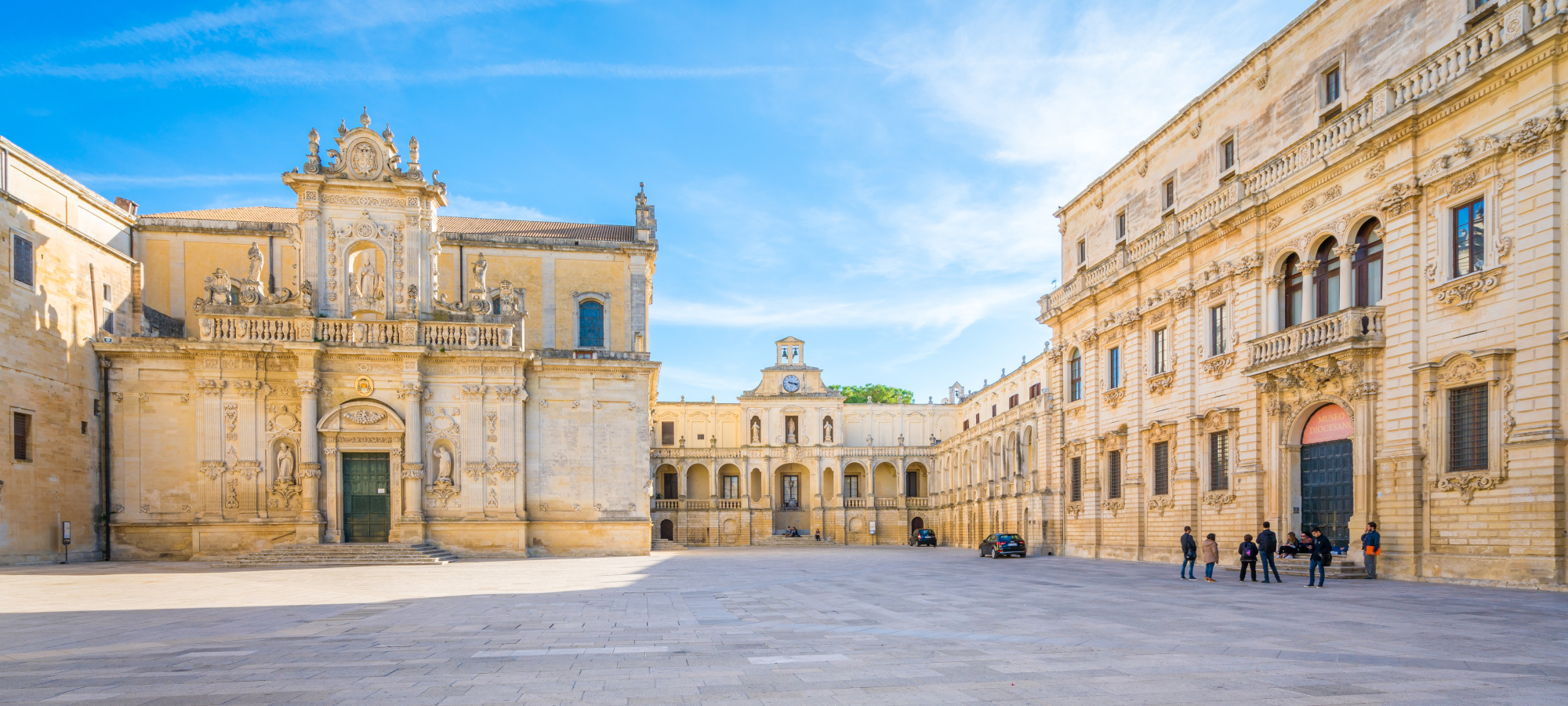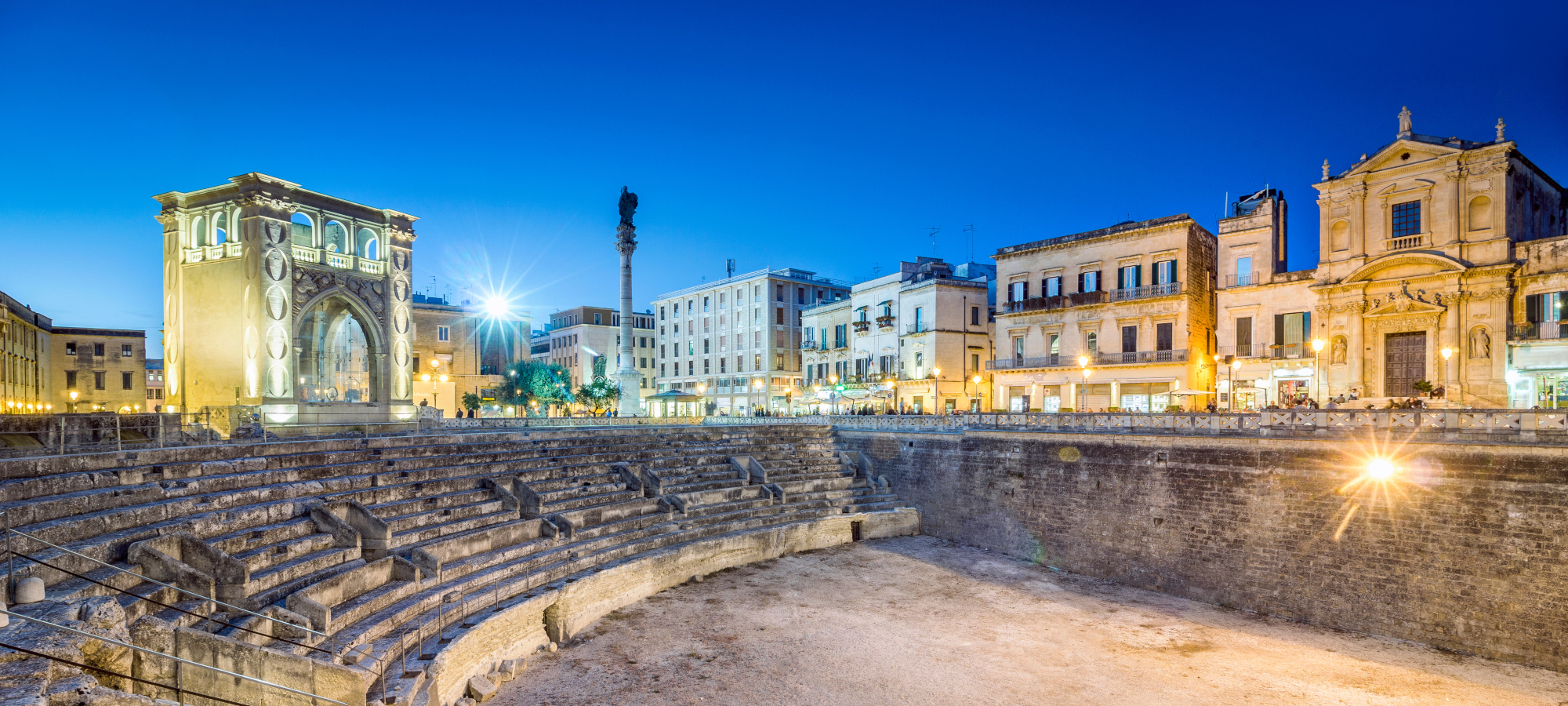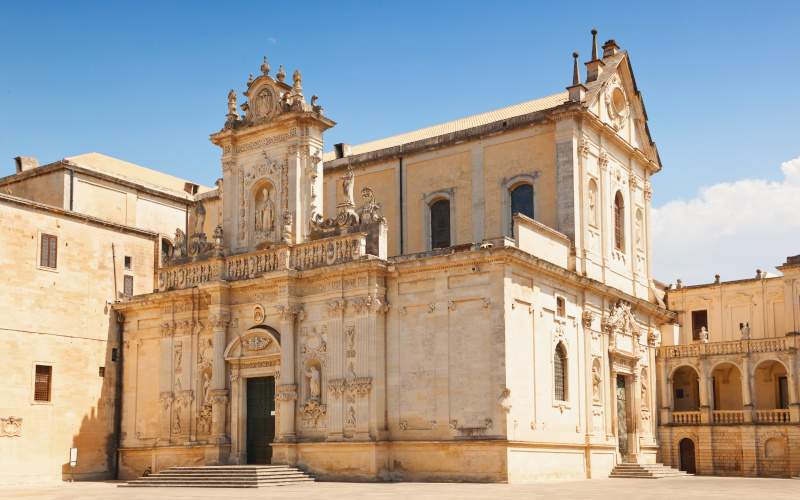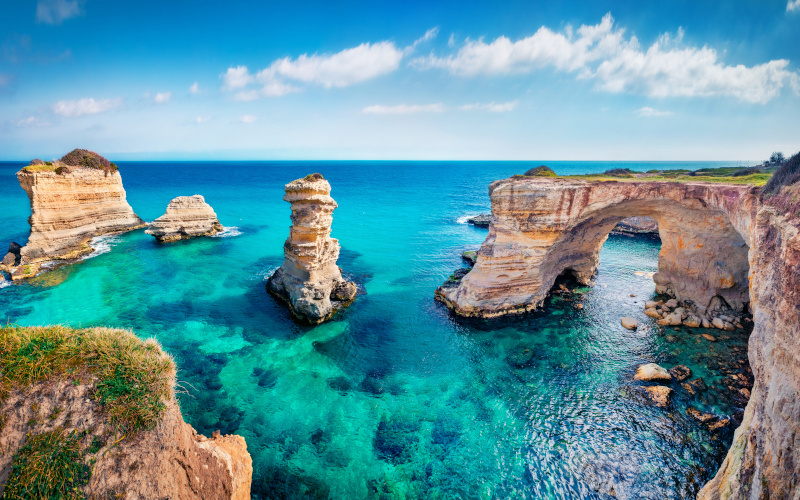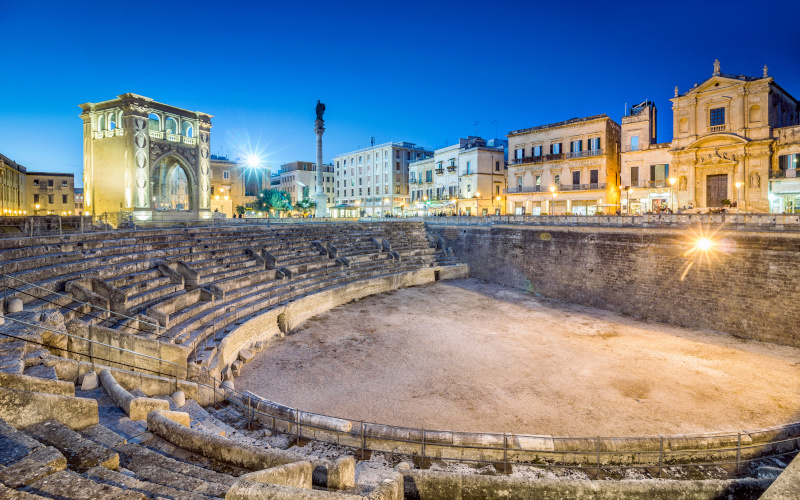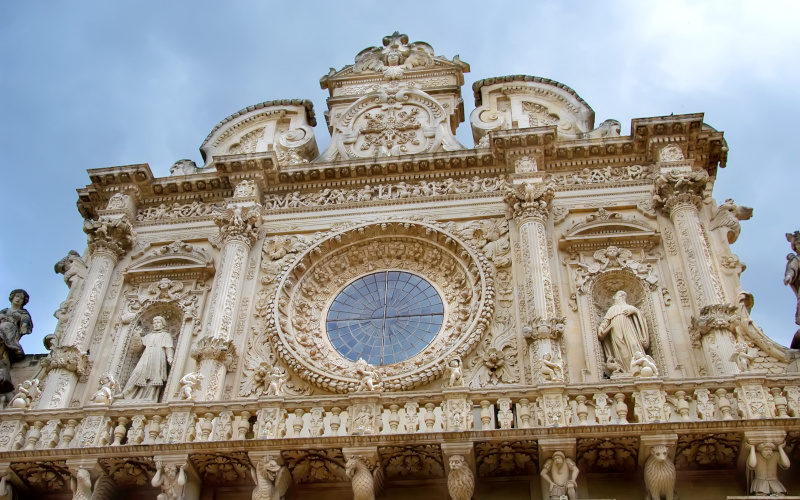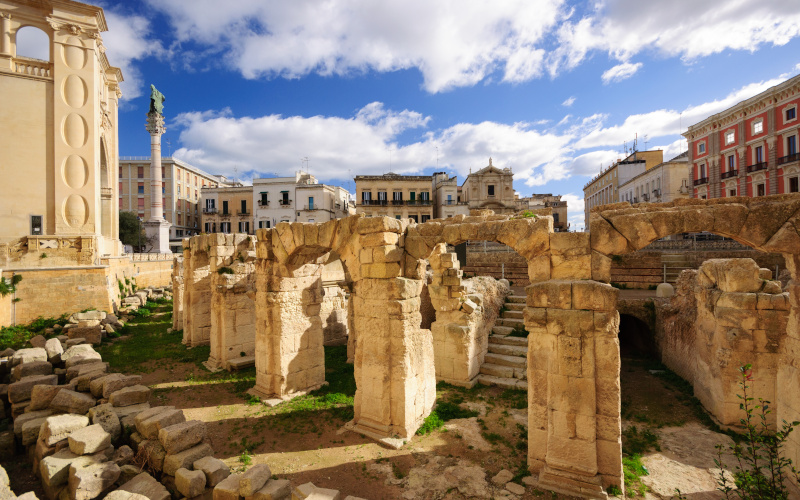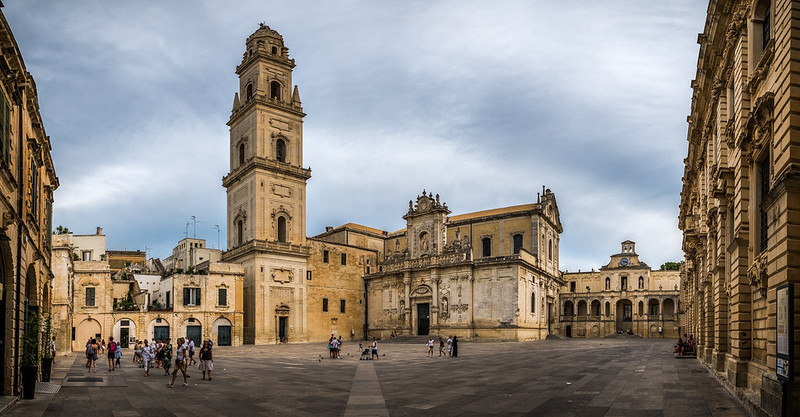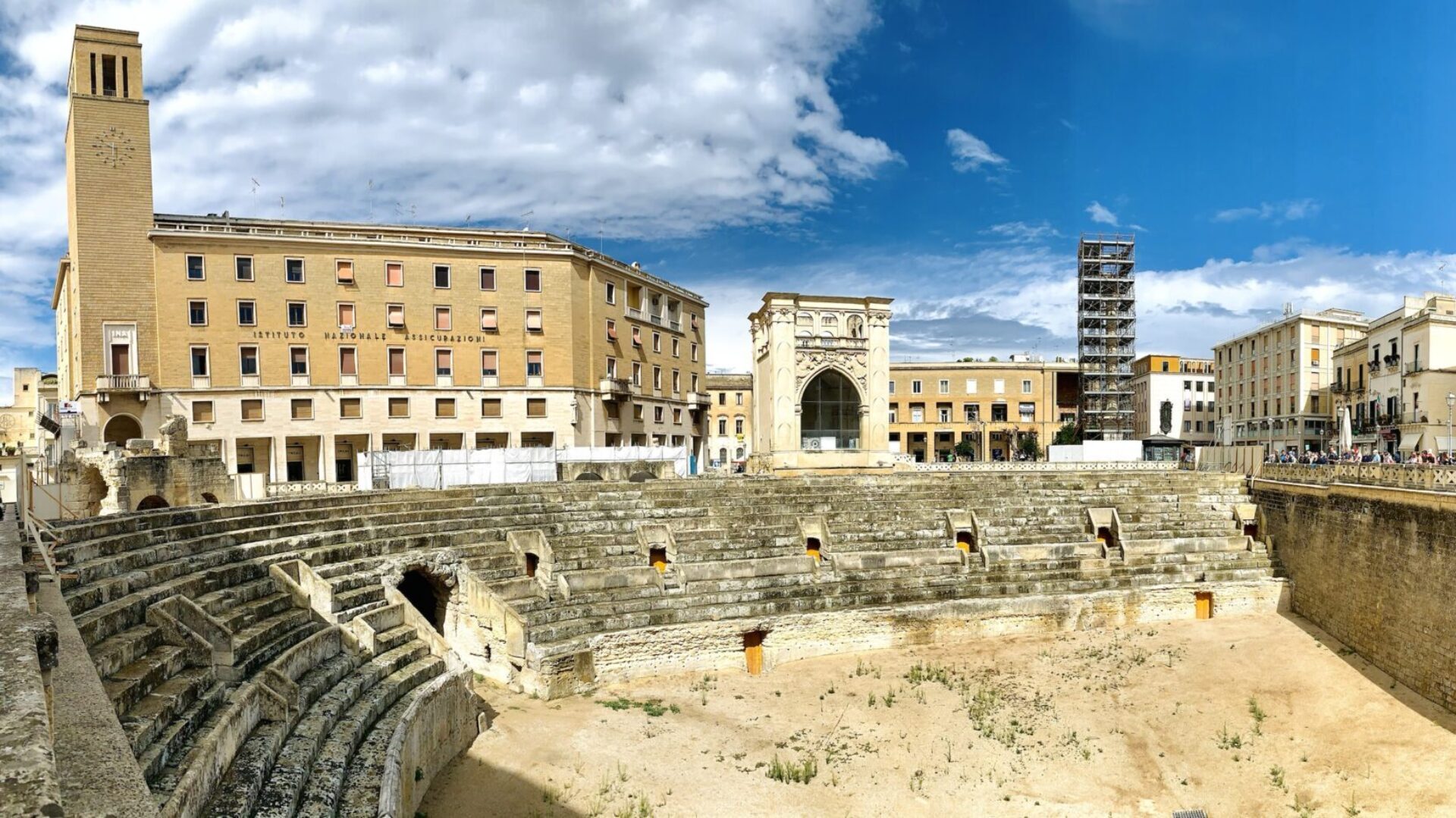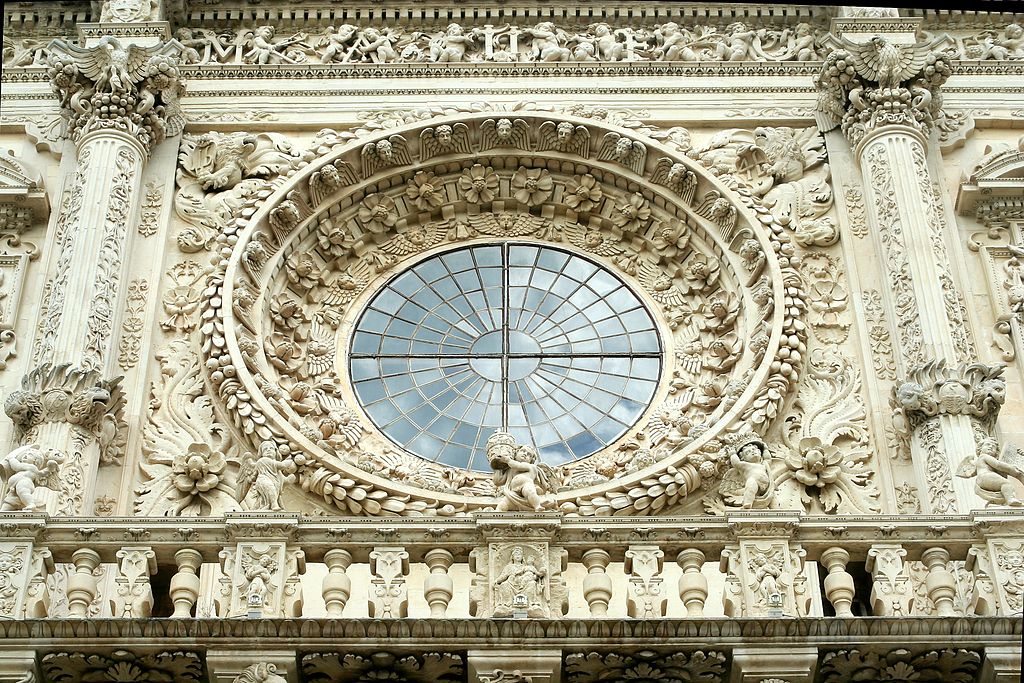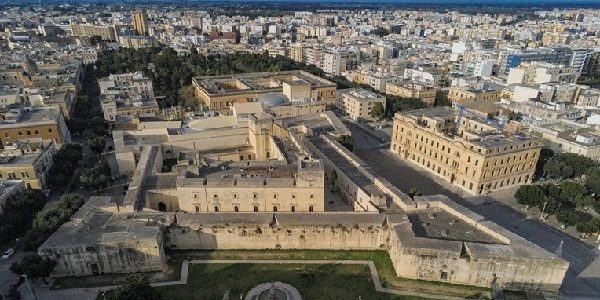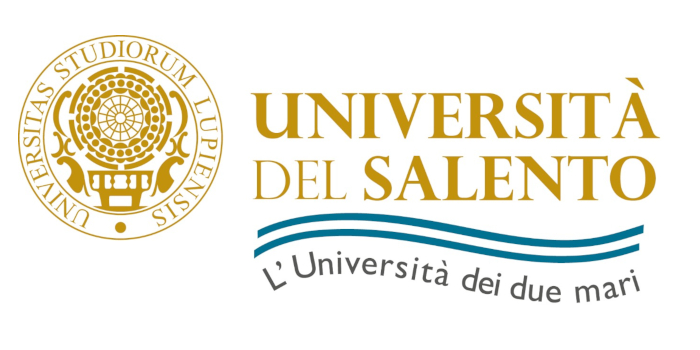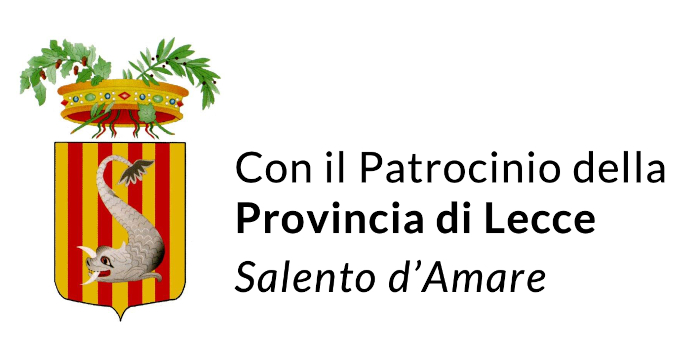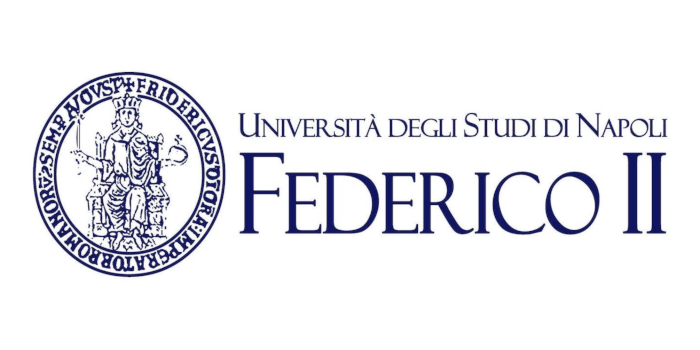Lecce is a historic city of 95,200 inhabitants in southern Italy, the capital of the province of Lecce, the second province in the region by population, as well as one of the most important cities of Apulia. It is the main city of the Salentine Peninsula, a sub-peninsula at the heel of the Italian Peninsula and is over 2,000 years old.
Because of the rich Baroque architectural monuments found in the city, Lecce is commonly nicknamed “The Florence of the South”. The city also has a long traditional affinity with Greek culture going back to its foundation; the Messapii who founded the city are said to have been Cretans in Greek records. To this day, in the Grecìa Salentina, a group of towns not far from Lecce, the griko language is still spoken.
In terms of industry the “Lecce stone” is the city’s main export, because it is very soft and malleable, thus suitable for sculptures. Lecce stone is a kind of limestone. Lecce is also an important agricultural centre, chiefly for its olive oil and wine production, as well as an industrial centre specialising in ceramic production.
Why you should visit Lecce?
The capital of the province of the same name and the cultural hub of Salento, Lecce in Apulia is one of the most beautiful cities in southern Italy. Known as the “Florence of the South”, Lecce knows how to amaze and fascinate tourists and visitors alike. Its ancient Messapian origins and the archaeological remains of Roman domination are mixed with the richness and exuberance of the Baroque, typically 17th-century, churches and palaces in the centre.
The Cathedral
The streets of Lecce city centre are an open-air museum. One example is the splendid Cathedral Square, home to the Duomo or Cathedral of Maria SS. Assunta with a bell tower and two fronts, one very sober and the other richly decorated the Bishop’s Palace, dating from the Renaissance period, with its splendid loggia, and the Seminary Palace, notable for its ashlar-decorated façade and characteristic internal cloister.
Saint Oronzo Square
Not far away, the famous square named after the city’s patron saint: Saint Oronzo Square, contains other artistic and historical gems from different eras. Dominating the square with its Renaissance elegance is the Palace of the Seat, also known as the ‘Sedile’, now a venue for interesting exhibitions and shows. The church of Saint Mary of Graces is of the same architectural style, while the majestic elliptical Roman amphitheatre bears witness to Roman rule.
Basilica of Holy Cross
The majestic Basilica of Holy Cross is an unexpected sight, a sumptuous stone carnival offered to those who walk along Via Umberto I in Lecce, not far from Saint Oronzo Square, the symbol of Lecce Baroque.
The triumph of decorations leaves you stunned and, at the apex of this explosion of bas-reliefs and sculptures in Lecce stone, the work of Cesare Penna to a design by Giuseppe Zimbalo, emerges the large rose window, decorated with floral friezes, bunches of fruit and cherubs.
Castle of Charles V
Built in the 12th century A.D., as attested by the excavations in the courtyard, the castle of Lecce is known to tourists visiting the city – and to the people of Lecce themselves – as the Castle of Charles V because its final and current configuration is the result of the 16th-century renovation ordered by the Spanish sovereign. Once used for defensive purposes, the castle now hosts numerous art exhibitions and cultural events.
